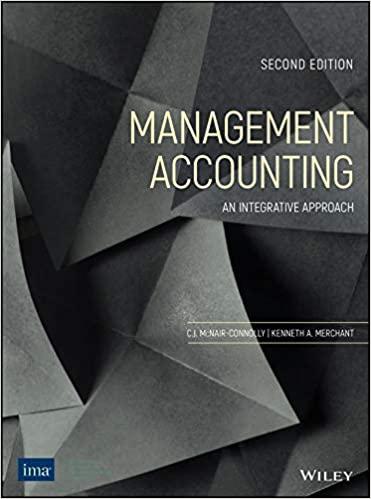Answered step by step
Verified Expert Solution
Question
1 Approved Answer
TRUE OR FALSE? Dividend in arrears is a term that applies to cumulative preference shares. A share capital dividend decreases retained earnings but it increases
TRUE OR FALSE?
- "Dividend in arrears" is a term that applies to cumulative preference shares.
- A share capital dividend decreases retained earnings but it increases contributed capital.
- A share capital dividend does not change total shareholders' equity.
- Book value per share is the amount earned for every capital share owned by a shareholder.
- Appropriation of retained earnings is necessary when the corporation reacquires its own share capital.
- The liquidation value of a preference share is always equal to its par value.
- Property dividends should be recorded at the fair value of the assets to be distributed.
- Earnings per share is computed for both preference and ordinary shares.
- On a corporation's statement of financial position, Ordinary Share Capital Subscribed will appear in the shareholders' equity section rather than in the asset section.
- A deficit (or debit balance) in Retained Earnings means that Retained Earnings appears in the asset section of the statement of financial position.
- A share capital dividend that has been declared but not yet distributed should be reported as a current liability
- The balance of the Income Summary account is transferred to the Retained Earnings account.
- Unappropriated retained earnings represent the amount of cash available for dividend distribution.
- The accounting cycle of a corporation is very much different from the accounting cycle of a partnership or a sole proprietorship.
- An appropriation of retained earnings reduces the total amount of retained earnings
- Dividends may be declared even if a corporation has a deficit.
- Book value per share capital is a measurement of the amount of income earned for each share of stock.
- A cumulative preference share capital is entitled to payment of dividends in arrears.
- When a portion of shareholders' original investment is returned in the form of a dividend, it is called a (an)
Step by Step Solution
There are 3 Steps involved in it
Step: 1

Get Instant Access to Expert-Tailored Solutions
See step-by-step solutions with expert insights and AI powered tools for academic success
Step: 2

Step: 3

Ace Your Homework with AI
Get the answers you need in no time with our AI-driven, step-by-step assistance
Get Started


